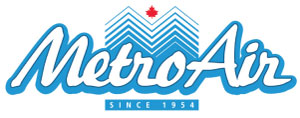We depend on our furnaces to get us through the cold winters and warm our homes to the perfect temperature. In fact, we probably take them for granted much of the time. But did you ever sit back and wonder when the first furnace was invented and how they have evolved over the years? Well, wonder no more because we’ve put together a brief (but very interesting) history of this wonderful invention. From the first-ever furnace to the latest smart systems that you can control with your smartphone or even the sound of your voice, you’ll find it all here.
Thank You, Romans
We really have the Romans to thank for the first furnace design. According to historical records, Roman engineers created a radiator called the hypocaust way back in 15 AD. Unlike the radiators we know today, Roman radiators were spaces set beneath the floor that were heated by a fire below. The open space allowed the flow of hot air, or radiant heat, to warm the area above it. The Romans used hypocausts to heat public baths, homes, and other buildings. Sadly, after the collapse of the Roman Empire people resorted to sitting in front of fires again as their primary source of heat. It wasn’t until some centuries later that radiant heating reemerged.
Heating in the 1700 and 1800s
Central heating systems using hot air, steam, and hot water weren’t invented until the 1700 and 1800s. In 1793, British engineer William Strutt had an idea for a furnace that heated outside air through a passage built under the ground. Then came the first steam-powered central heating system, invented during the 18th century when James Watt built the very first central boiler system in his own home. It worked by distributing steam at high pressure through a pipework system and was initially used in industrial settings.
Still, central heating still wasn’t an affordable or easily installed option for most homes. The majority of people continued to burn wood and coal in their fireplaces and stoves to get warm. It wasn’t until 1885 and the invention of the cast iron radiator that people were able to take advantage of steam-powered central heating in their homes. However, it was often the richer households that were able to afford this luxury. And finally, in the late 1880s came the technology that we know today; the first gas and propane furnaces.
The 1900s: Central Heating Finds Its Home
Toward the end of the nineteenth century, the steel coal furnace and cast iron radiators combined to create an improved version of central heating for Canadian homes and families. These two heating sources became the primary heating method of most homes until the middle of the 1930s when the first forced air furnace (FAU) was introduced. The first models used coal as their fuel source, and while they were an effective means of delivering heat, they were messy and needed to be fed with coal regularly. But gas and oil-fueled furnaces followed shortly after and gave families the same efficient means of heat without the task of manually keeping the basement fires burning. By the 1960s, gas was the preferred fuel of choice, and gas furnaces took over from oil and electric models. Today, around 60 percent of Canadian homes are heated with gas furnaces compared to around 9 percent of homes that still use oil-powered models.
Furnace Technology Today
The pilot light that was first lit in the 1800s is still burning brightly in millions of Canadian homes today. However, furnace and thermostat technology is evolving faster than ever. While the overall exterior design of furnaces may not have changed dramatically, it is the technology powering your furnace that is the real game-changer. From high-tech additions that allow your furnace to monitor its own performance and adjust accordingly, to smart home integrations that allow you to control the heat in your home with your voice or smartphone, furnaces and thermostats have come a long way.
Improved Efficiency
A lot of furnace technology today is focused on energy efficiency. Such advances help homeowners to reduce the cost of powering their furnaces and also reduce their carbon footprint. If your old furnace continues to chug away year on year and your energy costs seem to be creeping up, it could be time to invest in a new energy-efficient model.
Delayed Airflow
Another big innovation in today’s furnace technology is delayed airflow. When you turn on a furnace without delayed airflow, the fans turn on at the same time the furnace starts up. This creates an icy blast of cold air through your vents until the furnace warms up and gets things going. Furnaces with delayed airflow or blower delay allow your ducts to heat up before the air flows through.
Variable Speed Technology
Many energy-efficient furnaces now come with variable speed technology. This tech allows the system to change fan speed as required. This makes the furnace function at a smoother rate and also helps to address cold and hot spots in the home, too.
Quieter Operation
Today’s furnaces are also a lot quieter than older models. If your old furnace is making lots of noise when starting up or as it adjusts heat throughout the day, it could be time to upgrade to a quieter, more reliable and more efficient model.
Want to Bring Your Furnace Up to Date?
There’s never been a better time to upgrade your furnace. Today’s furnaces will perform at their best for many years, save you money on your energy costs, and give you ultimate control over your ideal temperature. To find out more about furnace installation and the cost savings you can make, speak to the team here at Pinnacle Group today. We’d be delighted to tell you all about the furnaces we recommend and the benefits they can bring to your home.


